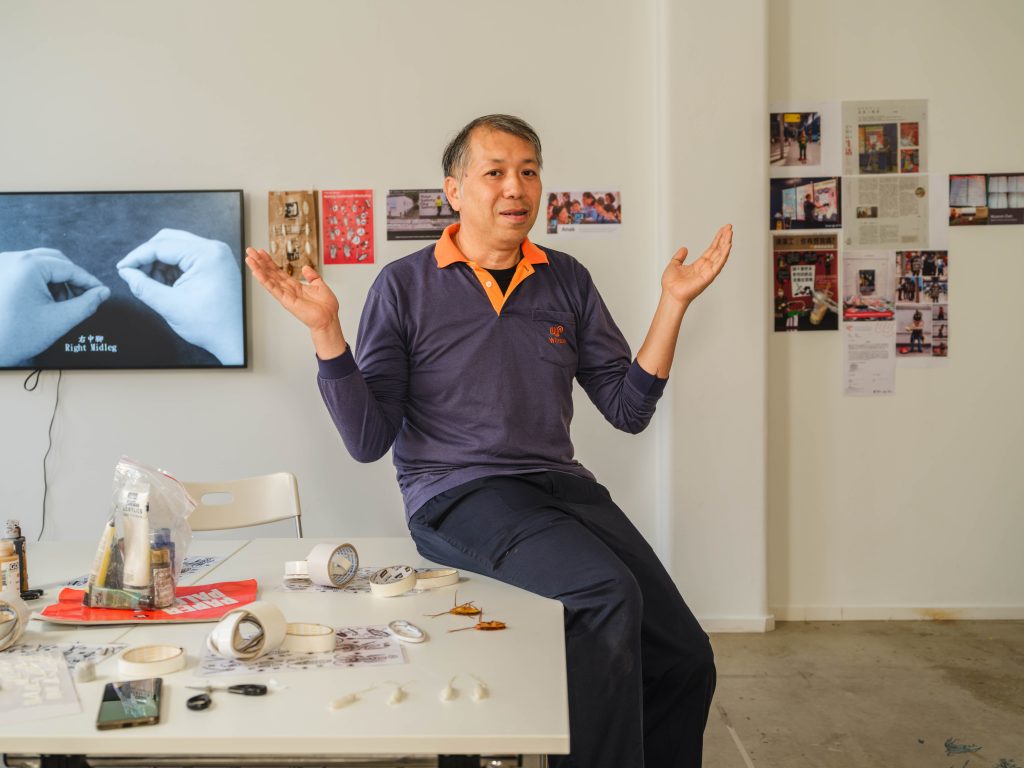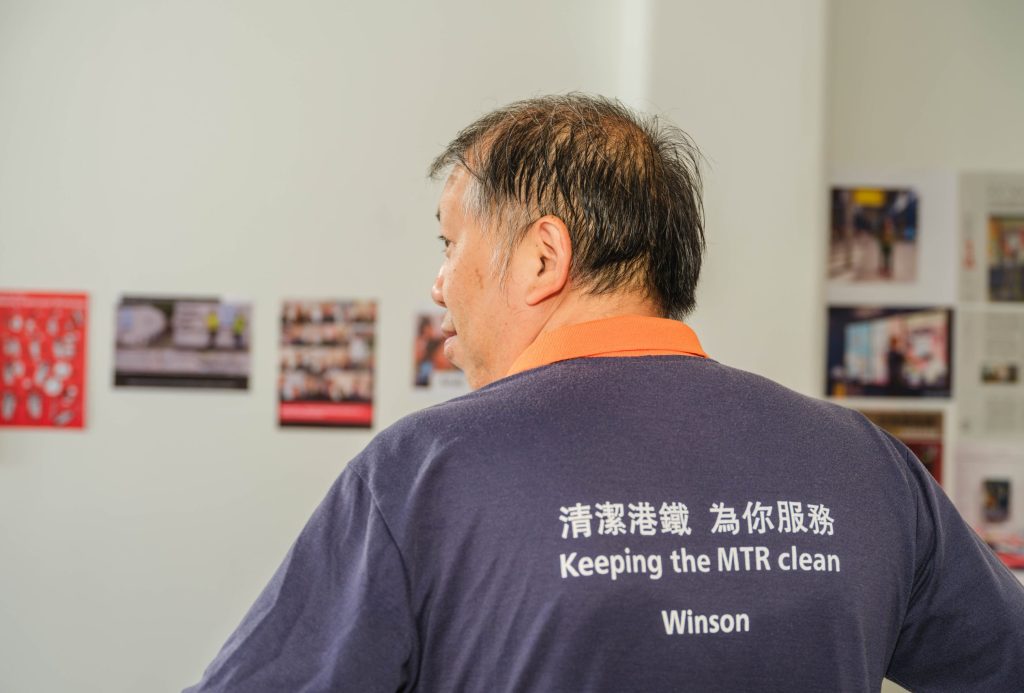Intervju med IASPIS residensstipendiat Luke Ching Chin Wai
I Stockholm finns IASPIS residensprogram med nio platser, varav fyra är för Sverigebaserade konstnärer och fem för utländska konstnärer inom bild- och formområdet. Sverigebaserade konstnärer söker till programmet, internationella konstnärer, med verksamhet utanför Sverige, bjuds in av IASPIS. Luke Ching Chin Wai är en av de internationella residentstipendiaterna. Läs intervjun nedan, på engelska.
Tell us about yourself and your background.
My name is Luke Ching and I am from Hong Kong, I am an artist, a part-time teacher at different universities, a cleaner in the subway station and also a freelance newspaper writer, so I have many different roles in Hong Kong. My main concern now in Hong Kong is on labour’s rights. One of the characters of my artwork is to develop small campaigns to make small changes to society.

Foto: Jean-Baptiste Beranger
Luke Ching Chin Wai
Where do you draw inspiration from?
My research right now at IASPIS is related to two companies. One is MTR which is a company from Hong Kong. I want to understand how the working environment in MTR here compares to the situation in Hong Kong. The other one is the Swedish company IKEA which exports home furniture all over the world. I am interested in how it shapes our imagination of what ‘home’ is through its designs and advertisements.
Right now, I am focusing on MTR because there was a strike in April and the conflict between the employer and employees is still developing. I held interviews with people working at MTR, including train conductors, drivers, cleaners, and some of them are members of worker unions. I want to learn more about the whole story. One of my roles as a writer is to write for a newspaper in Hong Kong to inform people about something from a different point of view, in this case it is how a Hong Kong company can export its company value here. It turns out to be a culture shock for me. MTR is one of the biggest private companies in Sweden and over seventy percent of its shares is owned by the Hong Kong government. When the capitalist mentality, exported by MTR, meets the long history of the collective bargaining rights of labour unions here in Sweden, they crash together and that is why strikes arose. The management culture of the Hong Kong company is not to communicate with the labour union, but purely make orders. So, conflicts occurred. We found that MTR earns money from all its overseas businesses except for the MTR in Sweden. This is an interesting story for us to study why and what happened. The Swedish model with traditional collective bargaining rights of labour unions is the main reason to why the Hong Kong MTR model doesn’t work in the same way here.

Foto: Jean-Baptiste Beranger
Luke Ching Chin Wai
Are there any labour unions in Hong Kong?
The labour movement is experiencing a low point, and some unions closed due to the new political situation. It is very impressive for me to find that Sweden has a lot of different trade unions. Here they work with collective bargaining and agreements, and we do not have any collective agreements in Hong Kong, or even this type of thinking. So, I try to understand this and how people can come together. I try to find the story behind the strike. I visited the demonstration and interviewed the workers and the unions. I wrote to a newspaper in Hong Kong to explain what I see here in Sweden. This is the macro part of the situation. And then also because I am a cleaner in Hong Kong, I am more focused on the cleaner’s working, so I also have a micro-observation. For example, one thing I find very strange in Stockholm is that there are a lot of rubbish bins inside the subway stations! I don’t know why. I counted them in different stations. When you put a lot of rubbish bins, the cleaners need to remove a lot of rubbish bags every day. Why are there so many? That is a micro daily observation and part of the research. I am also interested in studying the cleaners’ tools. I visited their rest room, which is like a dream room for us in Hong Kong! Everything you need you can find, but in Hong Kong we even need to fight for a locker! How the cleaning system works here and how this concept compared to a Hong Kong situation, I would really like to find out.
How do you document your research and later create your artwork?
One of the characteristics of the residence at IASPIS is that you, as an artist, are not required to make artwork but to instead do the research. So, for me, to study here is very significant. IASPIS gives me time to study the ‘how’ and which is my key concern now, and the research maybe becomes artwork later. Of course, we also try to do something here. There was heavy rain in Hong Kong a month ago, many MTR stations were flooded with water and very difficult to clean up. The cleaners had to perform this difficult task without additional payment. So, inspired by the empty advertisement places on the trains here, I designed an advertisement for them to raise public concern of the cleaners’ situation in Hong Kong. I also found some street rubbish bins got filled with posters which led them to be stuck and became functionless. So, for me these little problems are very interesting, and I want to play with these small observations. I like to find out small problems in daily life and deal with them. I usually work in this way.
Which are the most valuable experiences for you so far from your time here at the residency, that you take with you?
I think the most valuable thing is that IASPIS gives me enough space and freedom to conduct my research. For example, I can hold many interviews with workers and even trade unions. Considering the funding of IASPIS is from the Swedish government, it would be quite impossible to do if I did the same thing in Hong Kong because of the embarrassing relationship between government and labour unions. What seems sensitive in Hong Kong is totally okay here for me to study as an outsider. I learned a lot from the workers union here. The culture here is very different for the workers, and it is very inspiring for me.
